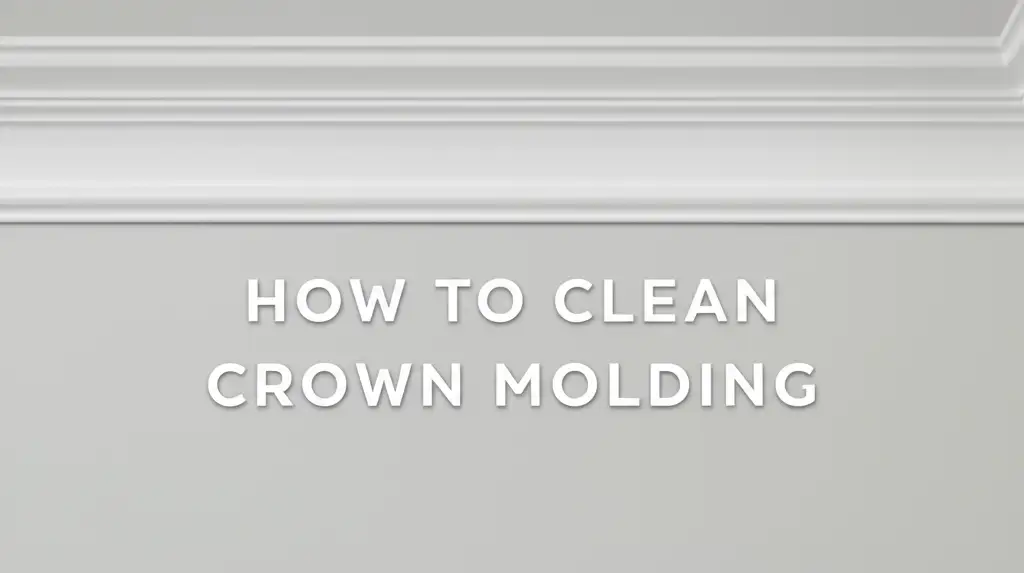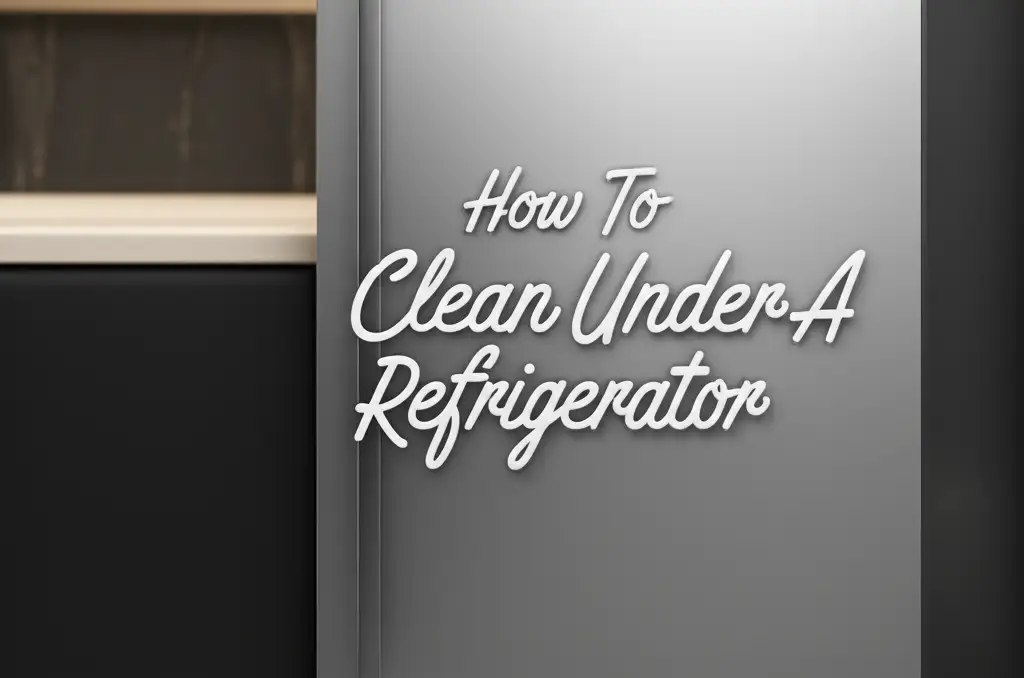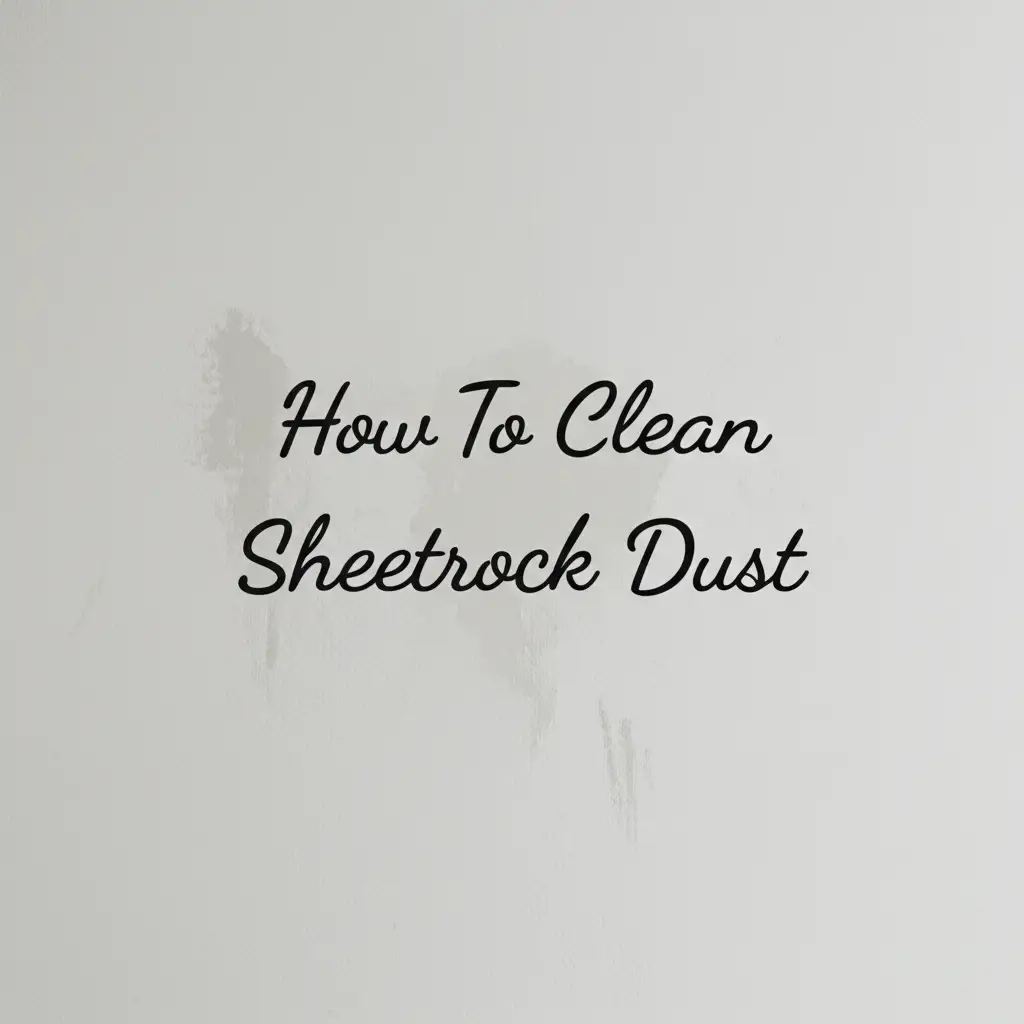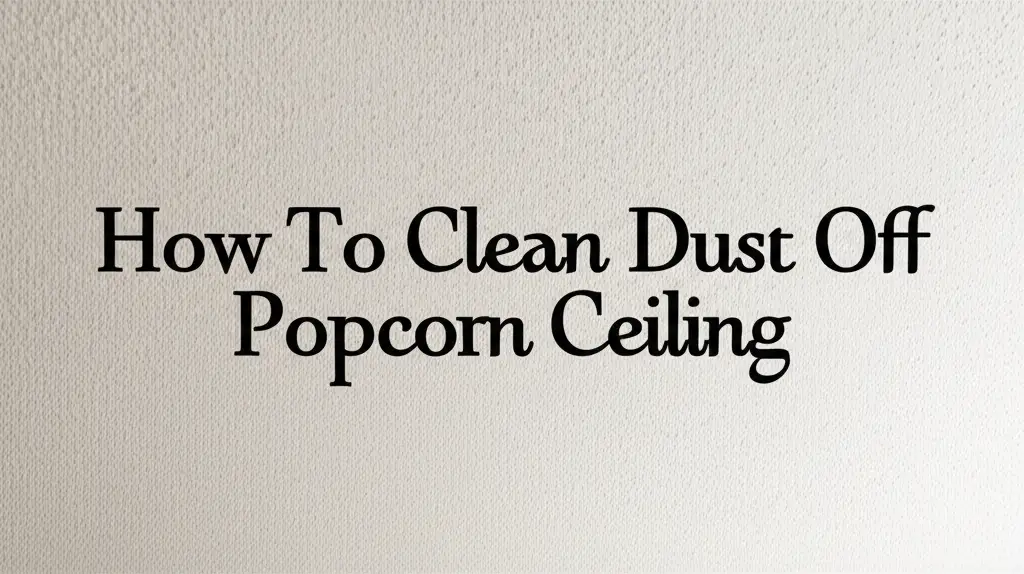· Home Cleaning · 14 min read
How To Clean Crown Molding

Effortlessly Clean Crown Molding: A Complete Guide
Crown molding adds elegance to any room. It creates a finished look where walls meet the ceiling. However, this beautiful architectural detail also collects dust, dirt, and even grime over time. Learning how to clean crown molding properly is important for keeping your home looking its best. Ignoring these areas can lead to noticeable build-up.
Cleaning crown molding might seem like a big job. Many people put it off because it is high up. This guide provides easy steps and practical advice. We cover everything from routine dusting to deep cleaning solutions. You will learn how to make your crown molding shine again. I will show you methods for different materials and common problems. Get ready to transform your living spaces with clean, bright molding.
Takeaway:
- Regular dusting prevents heavy dirt buildup on crown molding.
- Select the right tools for effective and safe high-reach cleaning.
- Use gentle cleaning solutions for different molding materials.
- Address specific problems like mold or stains with targeted methods.
- Prioritize safety when working at heights during the cleaning process.
To clean crown molding effectively, begin with dry dusting using an extendable duster or vacuum with a brush attachment. For stuck-on grime, use a damp cloth with mild soap or a specialized cleaner, testing it first on an inconspicuous area. Always dry the molding completely afterward.
Why Clean Crown Molding? The Importance of Regular Care
Crown molding acts as a decorative border. It often sits high where walls meet the ceiling. Because of its location, it attracts dust, cobwebs, and airborne particles. These particles settle on the molding’s surfaces. Over time, this buildup becomes very visible. It can make a room look dull and neglected.
Regularly cleaning crown molding maintains your home’s aesthetic appeal. Clean molding enhances the overall brightness of a room. It helps keep your interiors looking fresh and well-cared for. Dirty molding, on the other hand, detracts from your home’s beauty. It can make even a clean room feel less inviting.
Beyond aesthetics, cleaning also supports air quality. Dust and allergens collect on these high surfaces. When disturbed, these particles can re-enter the air. This affects people with allergies or respiratory issues. Removing dust from crown molding helps to reduce airborne irritants.
Finally, consistent cleaning helps preserve the molding itself. Dirt and moisture can damage finishes over many years. Regular, gentle cleaning protects the material. It prevents grime from becoming embedded. This extends the life and appearance of your crown molding for years to come.
Essential Tools and Supplies for Cleaning Crown Molding
Gathering the right tools makes the job much easier and safer. You need items that reach high places. You also need cleaning solutions specific to your molding material. Having everything ready before you start saves time and effort. It helps ensure a successful cleaning process.
First, consider your reach. An extendable duster is a great starting point. These dusters often have flexible heads. They can conform to the molding’s shape. A vacuum cleaner with a brush attachment also works well for dry dust. It sucks up the dust instead of pushing it around. A step ladder or sturdy stool is crucial for stability. Make sure it is tall enough to reach comfortably and safely. You may also need a longer extension pole for very high ceilings, similar to how you might approach cleaning a ceiling itself.
For wet cleaning, you will need two buckets. One bucket holds clean water. The other holds your cleaning solution. Soft cloths or microfiber towels are perfect for wiping. They are gentle and absorbent. Avoid abrasive sponges, which can scratch surfaces.
The cleaning solution depends on your molding’s material. For most painted or finished surfaces, mild dish soap mixed with warm water is effective. For tough grime or specific issues, consider white vinegar diluted with water. Always test any new solution in a small, hidden spot first. This prevents accidental damage. For wood molding, a specialized wood cleaner might be better. You might even consider products for cleaning stains on wood if your molding has old marks.
Lastly, wear gloves to protect your hands. Keep drop cloths or old towels on the floor. These catch any drips or falling debris. Having the right tools makes the cleaning process simple and efficient.
Routine Dusting: Keeping Crown Molding Dust-Free
Routine dusting is the first line of defense against dirt build-up. Regular upkeep makes deep cleaning less necessary. It saves you time and effort in the long run. Aim to dust your crown molding every few weeks or once a month. This schedule keeps dust from becoming embedded.
Start with dry dusting. This removes loose dirt and cobwebs. An extendable duster with a microfleece or feather head works wonders. You can reach high areas without a ladder. Gently run the duster along the top and sides of the molding. The duster traps dust effectively. Make sure to cover all surfaces.
A vacuum cleaner with a soft brush attachment is another excellent tool. It pulls dust directly into the vacuum. This prevents dust from falling onto your floors or furniture. It is especially useful for textured molding. The bristles can get into crevices. Move the vacuum attachment slowly along the molding.
For areas you can reach by hand, use a clean, dry microfiber cloth. Wipe down the molding surface. Microfiber picks up dust very well. Always wipe in one direction to collect dust efficiently. If you see light smudges, a slightly damp cloth can follow. However, for routine dusting, dry methods are usually enough.
This regular dusting prevents significant accumulation. It keeps your crown molding looking neat. It also makes future cleaning tasks much simpler. A little bit of consistent effort goes a long way.
Deep Cleaning Crown Molding: Tackling Grime and Stains
Sometimes, routine dusting is not enough. Crown molding can accumulate grease, grime, or specific stains. This requires a more thorough, wet cleaning approach. Deep cleaning brings back the original shine. It helps your molding look brand new again. Always start by dry dusting before any wet cleaning.
For most painted or finished molding, a mild soap solution works best. Mix a few drops of dish soap with warm water in one bucket. Fill a second bucket with plain clean water for rinsing. Dip a soft microfiber cloth into the soap solution. Wring out the cloth very well. It should be damp, not dripping. Excess water can damage molding, especially wood.
Gently wipe down sections of the molding. Use light pressure to remove grime. For stubborn spots, let the damp cloth sit for a moment. This softens the dirt. Do not scrub too hard, as this can damage the finish. After cleaning a section, rinse your cloth in the plain water bucket. Wring it out again. Then, wipe the soap residue from the molding. This prevents streaks. Finally, use a dry, clean cloth to thoroughly dry the molding. This is crucial to prevent water marks or damage.
For tougher stains or greasy build-up, a diluted white vinegar solution can be effective. Mix equal parts white vinegar and water. Use this mixture with a damp cloth, following the same process. Vinegar is a natural degreaser. It also helps remove mild discoloration. Always test vinegar solutions on an hidden spot first. It is an acidic cleaner. If you use vinegar, you might also find this article on cleaning walls with vinegar helpful for general surface cleaning tips.
For wood molding, use a specialized wood cleaner. Follow the product instructions carefully. Some wood cleaners require polishing afterwards. Always ensure the molding is completely dry before finishing. This prevents warping or moisture damage.
Dealing with Mold on Crown Molding
Finding mold on crown molding can be concerning. Mold often appears in areas with high humidity or poor ventilation. It shows as black, green, or fuzzy spots. Addressing mold quickly is important. It protects your home and your health. Always wear gloves and a mask when cleaning mold.
First, determine the mold’s extent. For small, superficial mold spots, a simple solution often works. Mix one part white vinegar with one part water in a spray bottle. Vinegar is a natural antifungal. Lightly spray the affected area. Let the solution sit for about 10-15 minutes. This gives the vinegar time to work.
After soaking, gently scrub the mold with a soft brush or a damp cloth. Do not use abrasive scrubbers, which can damage the molding surface. Wipe away the mold and the cleaning solution. Rinse the cloth often in clean water. Finally, use a dry cloth to thoroughly dry the molding. Proper drying helps prevent mold from returning. If you are dealing with mold on surfaces near the molding, information on cleaning mold off walls might also offer additional context.
For larger mold infestations or if the mold appears to be deeply embedded, professional help may be necessary. Mold can indicate a deeper moisture problem. You should address the source of the moisture to prevent future mold growth. This might involve fixing leaks or improving ventilation. Never paint over mold without cleaning it first. This traps the mold underneath. It will eventually reappear.
Always ensure the room is well-ventilated during and after cleaning mold. Open windows or use fans. Dispose of any cloths used for mold cleaning immediately. Do not reuse them. Taking these steps helps keep your crown molding and your home healthy.
Cleaning Different Types of Crown Molding Materials
Crown molding comes in various materials. Each material requires a slightly different cleaning approach. Knowing your molding type helps you choose the right method. This prevents damage and ensures an effective clean.
Painted Crown Molding is very common. Most painted molding is durable. You can clean it with a mild solution of dish soap and warm water. Use a soft cloth wrung out well. Avoid harsh chemical cleaners or abrasive scrubbers. These can strip the paint or leave marks. Always dry painted surfaces thoroughly after washing. This prevents water spots and potential paint damage.
Wood Crown Molding requires more care. Wood can absorb moisture. This can lead to warping or staining. For light dust, use a dry microfiber cloth or a vacuum brush. For deeper cleaning, use a specialized wood cleaner. Apply the cleaner to a cloth first, not directly to the wood. Wipe gently in the direction of the wood grain. Some wood types benefit from an occasional conditioning treatment. This helps maintain the wood’s luster and protects its finish. Never use excessive water on wood molding. If you have any stubborn marks on your wood trim, insights from cleaning stains on wood could be useful.
Plaster or Gypsum Crown Molding is more fragile. These materials can chip or crumble if not handled gently. For dusting, a soft brush duster is best. A vacuum with very light suction and a soft brush attachment also works. For wet cleaning, use minimal water. A lightly damp cloth with plain water or a very mild, non-acidic cleaner is appropriate. Avoid scrubbing. Dry immediately with a soft, clean cloth. Be very careful with ornate plaster designs. They are delicate and can break easily.
MDF (Medium-Density Fiberboard) Crown Molding is common in newer homes. It is usually painted. Treat it much like painted wood molding. MDF is sensitive to water. Excessive moisture can cause it to swell and warp. Always wring out cloths very well. Dry the molding quickly after wiping.
Always test any new cleaning product or method in a hidden spot first. This helps prevent accidental damage. Understanding your molding material helps you keep it beautiful for many years.
Tips for High and Hard-to-Reach Crown Molding
Cleaning high crown molding presents unique challenges. Safety is the most important factor. You need reliable tools to reach these elevated areas. Planning your approach makes the job safer and more efficient.
Always use a sturdy step ladder or an A-frame ladder. Ensure the ladder is on a flat, stable surface. Have someone spot you if possible, especially on taller ladders. Never overreach from the ladder. Move the ladder frequently to stay directly in front of the area you are cleaning. For extremely high ceilings, professional cleaning services might be a safer option. This is similar to the care needed when doing something like cleaning a ceiling itself.
An extension pole is an invaluable tool. Attach a duster, a mop head, or a microfiber cloth to the pole. Many cleaning tools have threaded ends to fit these poles. This lets you clean large sections without constantly moving your ladder. Wrap a damp cloth around a clean paint roller or a flat-head mop for wet cleaning. Secure it with rubber bands. This helps you apply cleaning solution evenly.
Work in sections. Start from one end of the room and move systematically around. This ensures you do not miss any spots. Divide the molding into manageable lengths. Clean each section thoroughly before moving on. This prevents streaks and missed areas.
For detailed cleaning of intricate designs, consider a soft-bristled brush attached to an extension pole. This helps dislodge dust from carvings and grooves. A small, soft paintbrush can also get into very tight spots. Use these brushes dry for dusting. For wet cleaning, lightly dampen the brush with your cleaning solution.
Wear old clothes and consider covering furniture with drop cloths. Dust and drips can fall during cleaning. This protects your belongings. Keeping safety and efficiency in mind helps you clean high crown molding with confidence.
FAQ Section
Q1: How often should I clean my crown molding?
You should dust your crown molding every few weeks or at least once a month. This prevents heavy dust buildup. Deep cleaning, with wet methods, is usually needed every six to twelve months. This depends on factors like air quality and humidity in your home. Regular maintenance saves you from more intensive cleaning later.
Q2: Can I use a regular vacuum cleaner for crown molding?
Yes, a regular vacuum cleaner with a soft brush attachment works very well. The brush helps dislodge dust and cobwebs. The suction pulls them directly into the vacuum. This prevents dust from spreading into the air. Ensure the attachment is clean and soft to avoid scratching your molding.
Q3: What is the best way to remove cobwebs from crown molding?
An extendable duster with a fluffy head is ideal for removing cobwebs. The duster’s fibers easily catch and trap cobwebs without leaving residue. You can also use a vacuum cleaner with a brush attachment. Move slowly to ensure all strands are captured.
Q4: Is it safe to use vinegar on painted crown molding?
Diluted white vinegar is generally safe for painted crown molding, especially for grease or light stains. Mix equal parts white vinegar and water. Always test this solution in an inconspicuous area first. Ensure your cloth is only damp, not wet, and dry the molding thoroughly afterward.
Q5: How do I clean very high crown molding without a tall ladder?
For very high crown molding, an extendable pole with various attachments is your best friend. You can attach dusters, microfiber cloths, or even small sponge mops to these poles. This allows you to reach high areas from a safer position on a shorter ladder or even the floor.
Q6: Can I use commercial cleaning sprays on crown molding?
Many commercial all-purpose cleaning sprays are safe for painted or non-wood crown molding. However, always check the product label for suitability on painted or specific finishes. Test the spray on a small, hidden area first. Avoid harsh chemicals like ammonia or bleach unless absolutely necessary and diluted.
Conclusion
Keeping your crown molding clean makes a significant difference in your home’s appearance. It brightens rooms and improves overall indoor air quality. I have covered everything from routine dusting to deep cleaning methods. You now understand how to tackle grime, remove mold, and care for different molding materials. We also discussed essential tools and safety tips for reaching high areas.
Regularly cleaning crown molding does not need to be a difficult chore. With the right tools and a little consistent effort, you can maintain its beauty. Remember to prioritize safety, especially when working at heights. Choose the appropriate cleaning solution for your specific molding material. By following these steps, you can ensure your “clean crown molding” remains a striking feature of your home for many years. Start your cleaning routine today and enjoy the fresh, crisp look of beautiful molding.
- crown molding cleaning
- dust removal
- home maintenance
- high reach cleaning
- decorative trim care




